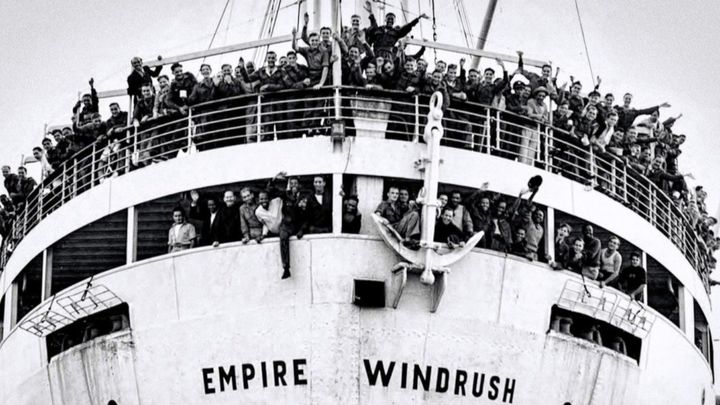
Monument for the Windrush generation
Donation protected
Monument for the Windrush generation
Seventy-five years ago on 22nd June 1948, the British Transport vessel EMPIRE WINDRUSH arrived in Tilbury, Port of London carrying more than 800 people, including families and children, looking to start new lives in the UK. These brave pioneers were amongst the first of eventually some 500,000 Black African-Caribbean immigrants who helped rebuild Britain after the war and infuse society with a vibrant and diverse culture. It changed Britain forever, and for the better.
WINDRUSH’s arrival is a unique moment in our country’s history, a singular event that can be pointed to today – 75 years later – which symbolises the beginning of Britain’s evolution into a modern and prosperous multicultural country. Moreover, the name “Windrush” is now universally known to stand for multiple generations of immigrants and their descendants, and that photo of the ship docked in Tilbury has become a famous and iconic image symbolising new beginnings. The most prominent object in the centre of that image is an anchor – also a recognised symbol of hope and belonging.
On this special anniversary the Windrush Anchor Foundation, a charity formulated for the purpose, is announcing a major fundraising effort for an ambitious project to recover the actual WINDRUSH anchor from its shipwreck and bring it back to the UK for it to be used as the centrepiece of a public monument that commemorates and celebrates the contributions Windrush people have made to British life and culture, and to mark that historic day. As the central element within the monument the anchor will serve as a ‘touchstone’ for people to physically connect with the 800 trailblazers and that unique moment in history.
Extensive research and preparations have been made to ensure the practical feasibility of the project, which is budgeted to cost £1,000,000. The funds will be used to locate the wreck where it sank in deep Mediterranean waters off the coast of Algeria, safely recover the 1.5-tonne anchor and bring it back to the UK where it will be conserved for permanent display. During the conservation period, expected to take at least one year, a jury-led competition will be held to select the winning monument design.
This campaign has been started to accept public donations to fund the initial £80,000, which would fund approximately one-day of sea time during the recovery expedition. The remaining funding is being sought from donors and corporate sponsors already in discussions with the Foundation. No Government funding is being requested.
The wreck of the EMPIRE WINDRUSH
After its historic voyage from Kingston, Jamaica to London the EMPIRE WINDRUSH continued to operate in service for the Ministry of Transport typically carrying military personnel and their families back to the UK from the far east. In late February of 1954, on one such voyage, the engine room of the vessel caught fire causing the immediate evacuation of all passengers and crew. While four engine room workers were tragically killed in the fire, a major rescue operation involving five merchant ships and three RN vessels saved the remaining 1,494 persons on board. The abandoned ship, still raging with fire, was being towed to Gibraltar when she sank two days later.
The wreck lies in international waters off the coast of Algeria on a relatively flat portion of the seabed approximately 2,800 metres deep. Because the vessel sank slowly we fully expect that the intact hull will lie upright on the seabed, as is normal with ships that sink in deep water, such that the stern anchor will be readily accessible for recovery. Most importantly, the position where WINDRUSH sank is known to a relatively high degree of accuracy (+/- 3 nautical miles), which gives us a very high degree of confidence that the wreck can be found.
Who we are.
The trustees of the Foundation are the social commentator and campaigner Patrick Vernon OBE, Julian Clark - Vice President and Senior Legal Advisor for Gard (UK) limited, journalist Nadine White, Reverend Michael King, Marie van der Zyl OBE President of the Board of Deputies of British Jews, and shipwreck hunter David Mearns of Blue Water Recoveries Ltd. In building a broad level of support, the trustees have engaged extensively with the Windrush community, the Jewish community and individual families impacted by WINDRUSH’s maritime history.
Michael King, Foundation trustee and the son of the Windrush founder Sam King MBE, said: “It’s a privilege to be part of the Foundation. My father would have thought of the anchor as keeping the ship in the right place once docked, as Jesus is the anchor of our Christian faith. So, the WINDRUSH anchor will be the symbolic anchor for the Windrush generation keeping us steady.”
For more information, please visit the project website -Windrush Anchor Memorial Project
Organizer and beneficiary
Patrick Vernon OBE
Organizer
England
David Mearns
Beneficiary